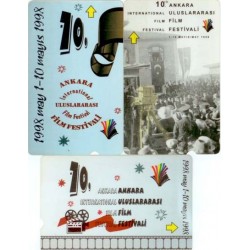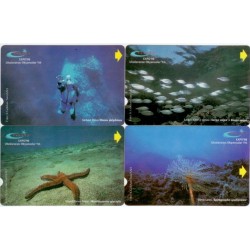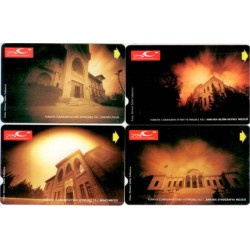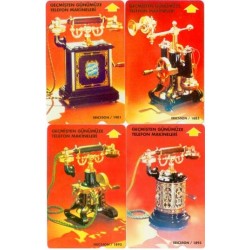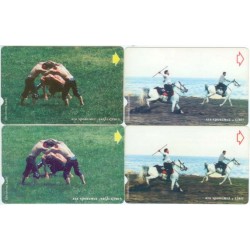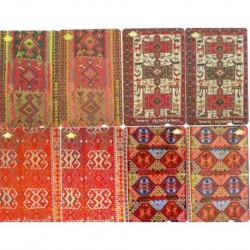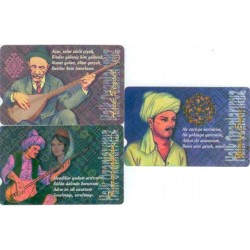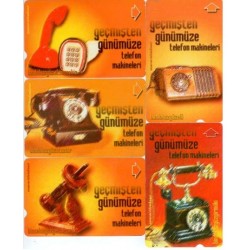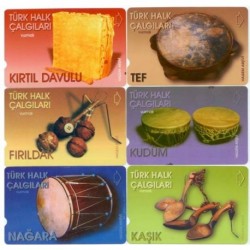No products
More info
YEAR=SEPTEMBER 2001, QUANTITY: 1.500.000<?xml:namespace prefix = o ns = "urn:schemas-microsoft-com:office:office" />
VALUES=30&60 UNITS,
PRINTING=PLASTEKNİK AND TRANSVARO.
EMPTY AND CLEAN PHONECARDS.
Topkapı Palace Museum
Topkapı Palace, constructed between 1475 and 1478, was transformed into a museum with a decree dated April 3, 1924. Topkapı Palace Museum not only exhibits cultural richness of the Ottoman Empire but also sacred belongings of the religion of Islam and it is one of the most important museums in its class in the world.
Hatay Museum
As there are very important archaeological settlements in and around Hatay, the idea of establishing a museum that would exhibit those works was suggested even before Hatay was joined to the motherland. As a result of the works started in 1934, Hatay Museum was completed in 1938. After Hatay was joined to Turkey in 1939, the museum reopened to visit in 1948. Hatay Museum has a world-wide reputation because of its mosaic collection that has been collected from various antique cities.
Anatolian Civilizations Museum
After the foundation of the Republic, on the instructions of Atatürk it was started to establish museums that would exhibit and preserve ancient works of the civilizations that had Iived in Anatolia. In this scope, in 1925 attempts were started to establish a Hittite Museum and the foundation of the building, known as Etnography Museum today, was laid. Archaeological works that were collected from around Ankara were first exhibited in Etnography Museum completed in 1928 and then Mahmut Pasha Bedesten (a covered bazaar) in Ankara Castle was used for this purpose. Bedesten was restored in 1967 and renamed as Anatolian Civilizations Museum. In the museum, there are works of various civilizations starting from paleontologic period.
Karatay Encaustic Tile Works Museum
Karatay Madrasa that had been constructed in 1251 by Seljuk Emir Celalettin Karatay, was restored in 1955 and arranged as Encaustic Tile Works Museum. In the museum especially encaustic tile wall parts and pots belonging to 12th and 13th centuries are exhibited.
Anitkabir (Mausoleum) Atatürk Museum
When Ataturk died in November 10, 1938, his casket was first buried in the temporary grave in Ankara Ethnography Museum. During this period, in direction of the common idea of Turkish Nation, works were started to construct a mausoleum for Atatürk. The project of Prof. Dr. Emin Onat and Assoc. Prof. Orhan Arda won the international project competition and construction of Anıtkabir was started in 1944. Anıtkabir was completed in 1953 and the casket of Atatürk was transferred there in November 10, 1953. Anıtkabir with its buildings and squares for ceremony on a hill in the middle of a green area has a completely artistic view. Personal belongings of Ataturk, valuable gifts presented to him by various institutions and people, and medals, memoirs, documents, photographs are exhibited in Ataturk Museum between Misak'i Milli (National Pact) Tower and Inkilap (Revolution) Tower in the south of Anıtkabir complex.




